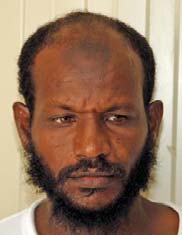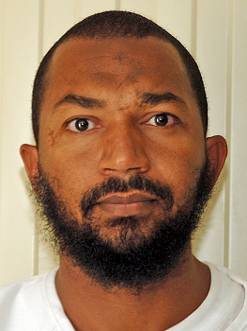The Treasury Department added three members of Jemaah Islamiyah (JI), an al Qaeda affiliate based in Southeast Asia, to its list of specially designated global terrorists earlier this month. Two of the three, Abdul Rahim Ba’asyir (Abdul Rahim) and Muhammad Jibril Abdul Rahman (Jibril), were identified as senior members of JI’s al Ghuraba cell in Karachi, Pakistan.
The Ghuraba cell was a joint effort by al Qaeda and JI to train a new generation of terrorists. Declassified and leaked US intelligence documents provide a wealth of details about the cell. According to the declassified memos authored by the CIA, the cell was tasked by 9/11 mastermind Khalid Sheikh Mohammed with conducting a hijacking operation against the US. And according to leaked threat assessments authored by Joint Task Force Guantanamo (JTF-GTMO), the cell’s members received training from members of another terrorist group, Lashkar-e-Taiba (LET), at LET-funded facilities in Karachi as early as 2001.
The Ghuraba cell was first discovered by US counterterrorism officials in 2003, during the questioning of several high-value detainees held in the CIA’s controversial detention and interrogation program.
Identified by detainees held in the CIA’s custody
The story begins with the capture of Khalid Sheikh Mohammed in March 2003. According to a declassified July 13, 2004 CIA memo entitled, “Khalid Shaykh Muhammad: Preeminent Source on Al-Qa’ida,” information provided by KSM “was the crucial first link in the chain that led” to the capture of “prominent JI leader and al Qaeda associate Hambali in August 2003 and more than a dozen Southeast Asian operatives slated for attacks against the US homeland.”
Prior to his capture, Hambali assisted al Qaeda in the 9/11 operation and was also responsible for the 2002 Bali bombings. Hambali and al Qaeda leaders had agreed to establish a new clandestine cell of operatives in Karachi years earlier. The “Southeast Asian operatives” mentioned in the CIA’s memo were members of this cell – known as the Ghuraba cell.
KSM, according to the CIA’s memo, told officials that an al Qaeda operative named Majid Khan had delivered “$50,000 in December 2002 to operatives associated with Hambali.” Khan, who was allegedly going to take part in a terrorist attack on targets inside the US, was captured in early March 2003, just days after KSM himself was detained. Khan was confronted with the intelligence from KSM and “acknowledged that he delivered the money to an operative named ‘Zubair.'” Khan “also provided Zubair’s physical description and contact number,” which led to Zubair’s capture in June 2003.
According to another declassified CIA memo dated June 3, 2005 and entitled, “Detainee Reporting Pivotal for the War Against Al-Qa’ida,” Zubair then provided information that led to another operative who worked for Hambali known as “Lillie.” It was Lillie who “provided the location of Hambali, leading to his capture.” (Along with KSM, Khan, Hambali, Lillie and Zubair are all currently detained at Guantanamo.)
After Hambali was captured, KSM was asked about Hambali’s likely successor as head of JI. KSM identified Hambali’s brother, ‘Abd al-Hadi (aka Rusman “Gun Gun” Gunawan) as the terrorist who would most likely take over JI. Hambali then “unwittingly” disclosed Gun Gun’s location, leading to his brother’s arrest.
Once in custody, Gun Gun identified a “cell of JI operatives whom Hambali had sent to Karachi for training.” Hambali was then confronted with his brother’s admissions and admitted “that he was grooming members of the cell for US operations – at the behest of KSM – probably as part of KSM’s plot to fly hijacked planes into the tallest building on the US west coast.”
In September 2003, 14 members of the Ghuraba cell identified by Gun Gun were arrested by Pakistani authorities. The CIA’s July 13, 2004 memo notes that some members of the cell were pilots.
In its designation last week, the Treasury Department noted that Abdul Rahim “indoctrinated students to become future JI leaders and instructed that Al Ghuraba cell members should kill Americans at every opportunity.” Abdul Rahim “also taught them how to carry out a hijacking operation.”
The Treasury Department did not say if Abdul Rahim’s training was part of KSM’s post-9/11 hijacking plot targeting America’s West Coast, but it is possible.
Lashkar-e-Taiba, JI and al Qaeda
In addition to being a dual-hatted JI and al Qaeda operative, Abdul Rahim has also long worked with Pakistani terrorist organizations. Abdul Rahim has been “involved in JI’s outreach to the Pakistan-based terrorist organization Lashkar-e-Taiba (LET),” the Treasury Department alleged in its designation. “Sometime after 1999, Abdul Rahim was tasked by JI member Zulkarnaen to run a madrassa in Pakistan and was encouraged to expand cooperation between JI and LET through this madrassa.”
The madrassa in question was not named, but leaked threat assessments authored by Joint Task Force Guantanamo (JTF-GTMO) provide additional information on the JI’s ties to LET and LET-funded madrassas.
|
|
|
Mustafa Ibrahim Mustafa al Hassan. |
Mustafa Ibrahim Mustafa al Hassan (internment serial number 719) and Amir Yakoub Mohammed al Amir Mahmoud (ISN 720) were captured by Pakistani forces in March 2002 as they were en route to Afghanistan, where they intended to wage jihad against American-led forces. After being transferred to American custody, they were held at Guantanamo for several years before being repatriated to Sudan in 2008. Two other former Guantanamo detainees were captured with Hassan and Mahmoud as well. Three members of the detained group were dressed as women at the time of their capture, in an attempt “to hide their identities from authorities.”
JTF-GTMO assessed that both Hassan and Mahmoud were LET members with substantive links to al Qaeda. Both were suspected of having ties to an al Qaeda “operative targeting US personnel in Sudan.” Mahmoud allegedly “received three years of tutoring from an identified al Qaeda explosives expert.” And senior al Qaeda facilitator Abu Zubaydah, who is detained at Guantanamo, “recognized a photo of [Hassan] and reported he was on the front lines in Afghanistan during 2000 or 2001.”
According to a JTF-GTMO threat assessment, Hassan told US officials that he stayed with another Sudanese man in Karachi. Hassan said he met the man at the Jamia Abu Bakr Mosque. That same mosque is “tied to the Abu Bakr Islamic University (ABIU).”
Gun Gun Gunawan was pretending to be a student at ABIU at the same time Hassan was attending the ABIU-affiliated mosque. Asia Times reported in 2004 that Gun Gun attended the university “on a scholarship provided by the Pakistani government under a fake name.”
The JTF-GTMO file for Hassan provides more intelligence on ABIU. The university “was an Islamic education facility reportedly funded by the [LET].” The school “was used for training and indoctrination by members of JI for their future leaders.” Gun Gun and members of the Ghuraba cell “were arrested in 2003 at ABIU and other Karachi schools.”
The file for Hassan also contains this note: “Additional connections between the JI and [LET] at the ABIU included training of Gunawan’s associates by [LET] members in 2001.” It appears, therefore, that the LET provided training for al Qaeda’s formerly secret Ghuraba cell.
JTF-GTMO never determined the full extent of Hassan’s putative ties to JI. In August and September of 2001, according to the leaked file, Hassan “conducted a trip to Southeast Asia…possibly indicating his concurrent association with the [LET] and the JI, which continued through his travel in Pakistan.” But JTF-GTMO was not sure what Hassan really did on his trip.
|
|
|
Amir Yakoub Mohammed al Amir Mahmoud. |
Both Hassan and Mahmoud were repatriated to Sudan despite JTF-GTMO’s assessment that they posed “high” risks to the US and its allies. Just months before they were sent home in 2008, JTF-GTMO recommended that the US continue to hold the men in custody.
Still at large
The only terrorist mentioned in this account who has, to date, avoided capture is Abdul Rahim. The other member of the Ghuraba cell designated by the Treasury Department earlier this month, Jibril, is in Indonesian custody. The Treasury Department reports that Jibril had been “carefully preselected for travel to Pakistan as a member of” the Ghuraba cell. “While in Pakistan, Jibril participated in military training and in 2001 was dispatched to Kashmir” by Gun Gun. It is not clear if Jibril went to Kashmir under the LET’s auspices, but some degree of coordination is possible as the jihad in Kashmir was long the LET’s main focus.
While many of his compatriots have been apprehended or killed, Abdul Rahim continues to plot. And another leaked JTF-GTMO threat assessment notes that he maintains contacts around the globe. A 2008 JTF-GTMO file summarizing the intelligence on former JI chieftain Hambali notes that Abdul Rahim “continues to maintain contacts in Pakistan and Yemen.”









